Understanding Autism Behavior Modification: Techniques and Strategies
Autism spectrum disorder (ASD) presents unique behavioral challenges that can be effectively addressed through targeted behavior modification strategies. These approaches focus on reinforcing positive behaviors, reducing problematic ones, and supporting social, communication, and adaptive skills. This article explores the broad spectrum of interventions, tools, and guidelines that underpin successful autism behavior management, emphasizing evidence-based practices like Applied Behavior Analysis (ABA), naturalistic interventions, and sensory supports.
Foundations of Behavior Modification in Autism
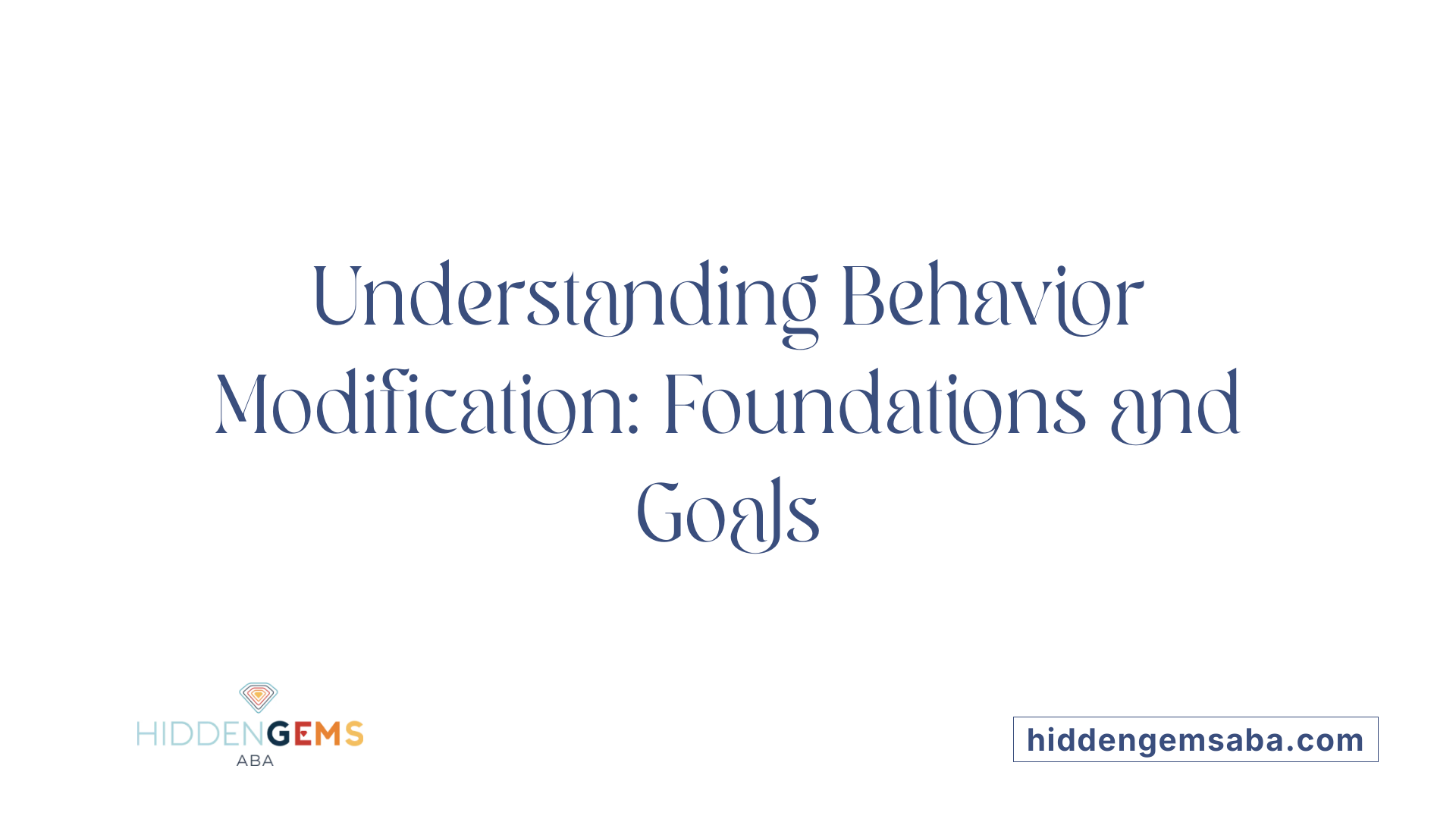
What is behavior modification and how is it used for children with autism?
Behavior modification is an approach grounded in the science of learning called operant conditioning. It involves applying specific strategies to increase desirable behaviors and decrease problematic ones. For children with autism, this means systematically reinforcing positive actions like communication, social interaction, or daily living skills.
Therapists and caregivers use techniques such as positive reinforcement — rewarding children when they exhibit targeted behaviors. For example, giving a child praise or tokens when they request help appropriately. This encourages the child to repeat those behaviors.
Other methods include prompting, shaping, and modeling. Prompting might involve guiding a child step-by-step to complete a task. Shaping rewards successive approximations toward a desired skill, gradually refining behaviors. Modeling involves demonstrating the appropriate behavior for the child to imitate.
Importantly, interventions are tailored to each child's unique needs and developmental level. This individualized planning ensures that strategies are effective and appropriate.
Overall, the goal of behavior modification is to foster skills that support independence and integration into daily routines, reducing challenging behaviors and promoting positive growth.
Core Behavioral Interventions and Their Roles
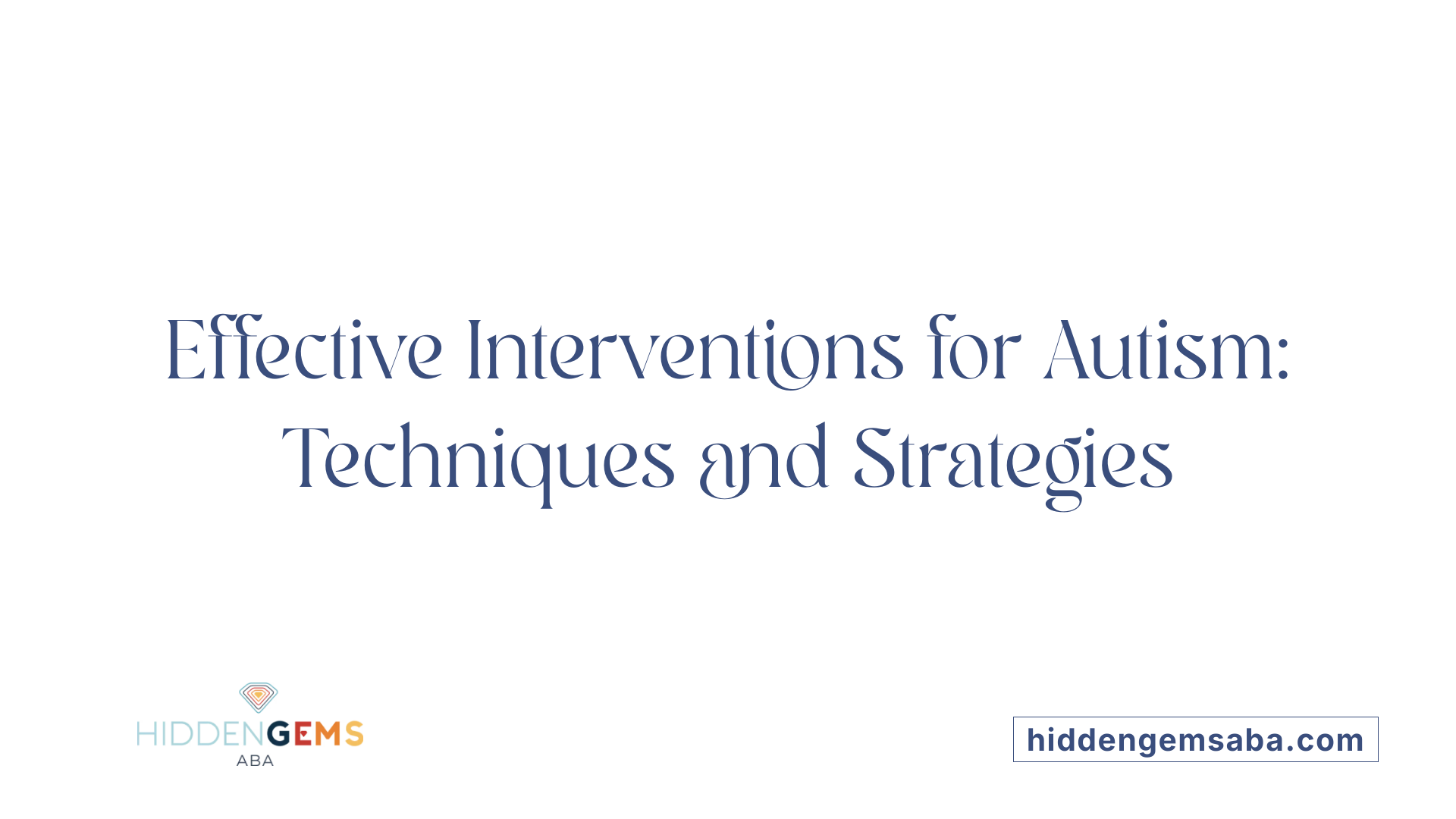
What are common behavioral interventions for autism?
Children with autism benefit from various behavioral approaches tailored to their needs. Among the most validated and widely used methods is Applied Behavior Analysis (ABA). This science-based therapy employs positive reinforcement to increase desirable behaviors, such as communication, socialization, and daily living skills, while reducing problematic actions.
ABA includes several specific strategies:
| Intervention Type | Description | Focus Area |
|---|---|---|
| EIBI (Early Intensive Behavioral Intervention) | An intensive form of ABA for young children, typically starting before age 3, involving 20-40 hours per week of individualized therapy. | Cognitive skills, language, social behavior |
| PRT (Pivotal Response Treatment) | Play-based, naturalistic method emphasizing motivation and self-initiation to foster broader skill development. | Communication, social engagement |
| Discrete Trial Teaching (DTT) | Breaks down skills into small steps, reinforced positively, in a structured setting. | Skill acquisition in various areas |
| Milieu Teaching | Uses routine activities in natural settings to promote language and social skills. | Functional communication |
Alongside ABA, other interventions support developmental progress and emotional regulation. Speech and language therapy help children develop expressive and receptive communication, while sensory integration techniques assist in managing sensory over-responsiveness or under-responsiveness.
Naturalistic Developmental Behavioral Interventions (NDBI) like the Early Start Denver Model (ESDM) blend behavioral techniques with developmental approaches. They promote social interaction and communication in natural environments, using strategies like incidental teaching, which encourages children to ask for objects, and milieu teaching, to promote spontaneous language.
Parent involvement is crucial. Parent-mediated interventions empower caregivers to implement strategies at home, increasing therapy intensity and generalization. Cognitive Behavioral Therapy (CBT) can address emotional difficulties, particularly in adolescents and adults.
While evidence supports the effectiveness of these interventions, the quality of research varies. Large-scale, long-term studies are needed to compare their effects more thoroughly. Nonetheless, a combination of behavioral therapies, speech, sensory, and developmental strategies typically yields the best outcomes for children with autism.
Supporting Positive Behaviors Through Structured Strategies
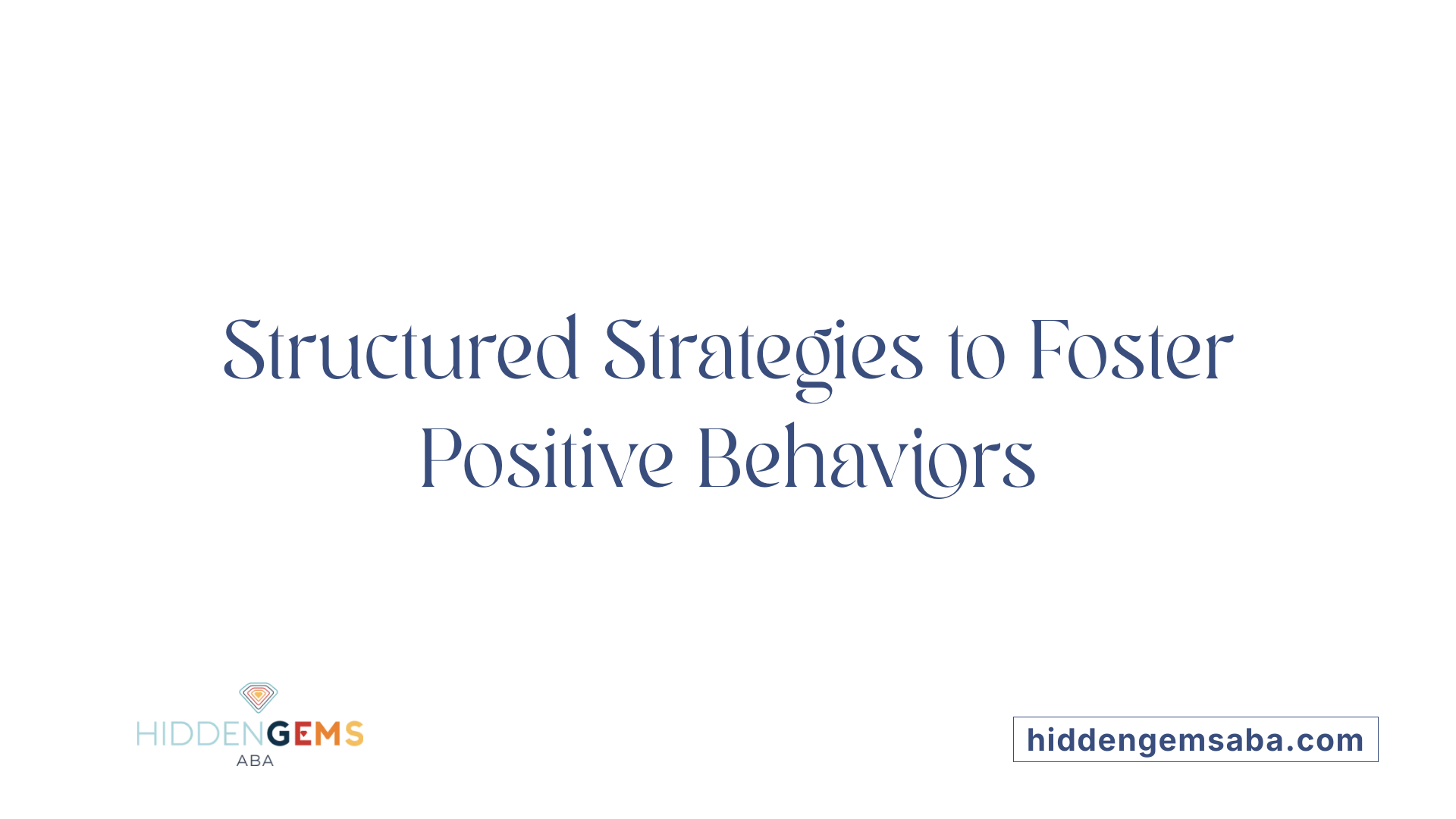
What are effective strategies for supporting positive behaviors in autistic individuals?
Supporting positive behaviors in children with autism involves a variety of structured, visual, and consistent methods. Visual supports such as timers, countdown charts, and visual schedules help children understand upcoming transitions and time expectations. For example, using visual timers or countdowns clearly shows how long a break or activity will last, which can reduce anxiety and increase cooperation.
Establishing clear expectations and maintaining consistency is essential. Consistent routines and predictable environments help children feel secure and understand what behaviors are expected. Using visual or written rules, along with positive reinforcement for meeting these expectations, encourages compliance and reduces confusion.
Reinforcement strategies, including acknowledging children for following requests and providing specific praise, reinforce desirable behaviors. Offering choices within set boundaries also gives children a sense of control, promoting independence and motivation.
Natural consequences, such as earning privileges for positive behavior, encourage ongoing cooperation. For example, completing a task may earn access to a preferred activity. Additionally, showing children the next activity or item facilitates smooth transitions, making changeovers less stressful.
Providing opportunities for self-regulation—like calm-down areas and sensory tools—helps children manage their emotions. Allowing transitional objects, such as a favorite toy or comfort item, can also ease transitions.
Avoiding negative language during challenging moments is vital. Redirecting problematic behaviors with distraction and offering engaging, structured activities helps children remain calm and focused.
Increase understanding through clear, brief, and concrete directions. Using visual aids, videos, or demonstrations enhances comprehension and reduces frustration.
In cases of overstimulation, decreasing sensory input or moving to a less stimulating environment can prevent meltdowns.
These strategies, combined with collaborative efforts by professionals such as speech and occupational therapists, foster a supportive setting that encourages positive behaviors, skill-building, and emotional regulation. The overall goal is to create a nurturing environment where children feel respected, understood, and motivated to engage positively.
| Strategy | Description | Example |
|---|---|---|
| Visual supports | Timers, schedules, countdowns to teach time and transitions | Using a visual timer for break times |
| Clear expectations & consistency | Establishing routine expectations and sticking to them | Daily visual rules displayed at child’s eye level |
| Reinforcement & positive feedback | Acknowledging compliance and behavior with praise or rewards | Giving stickers or verbal praise for following instructions |
| Providing choices | Offering options within structure to foster independence | Choosing between two preferred activities |
| Managing sensory needs | Using sensory tools or environment adjustments for overstimulation | Wearing noise-canceling headphones |
| Structured activities | Using hands-on or visual tasks to maintain engagement | Puzzle activities during learning time |
| Calm, positive demeanor | Showing calmness to influence emotional regulation | Gentle voice and slow movements during transitions |
By implementing these strategies systematically, caregivers and educators can support children with autism in developing positive behaviors, reducing frustration, and building skills for greater independence.
Tools and Visual Supports in Behavior Management
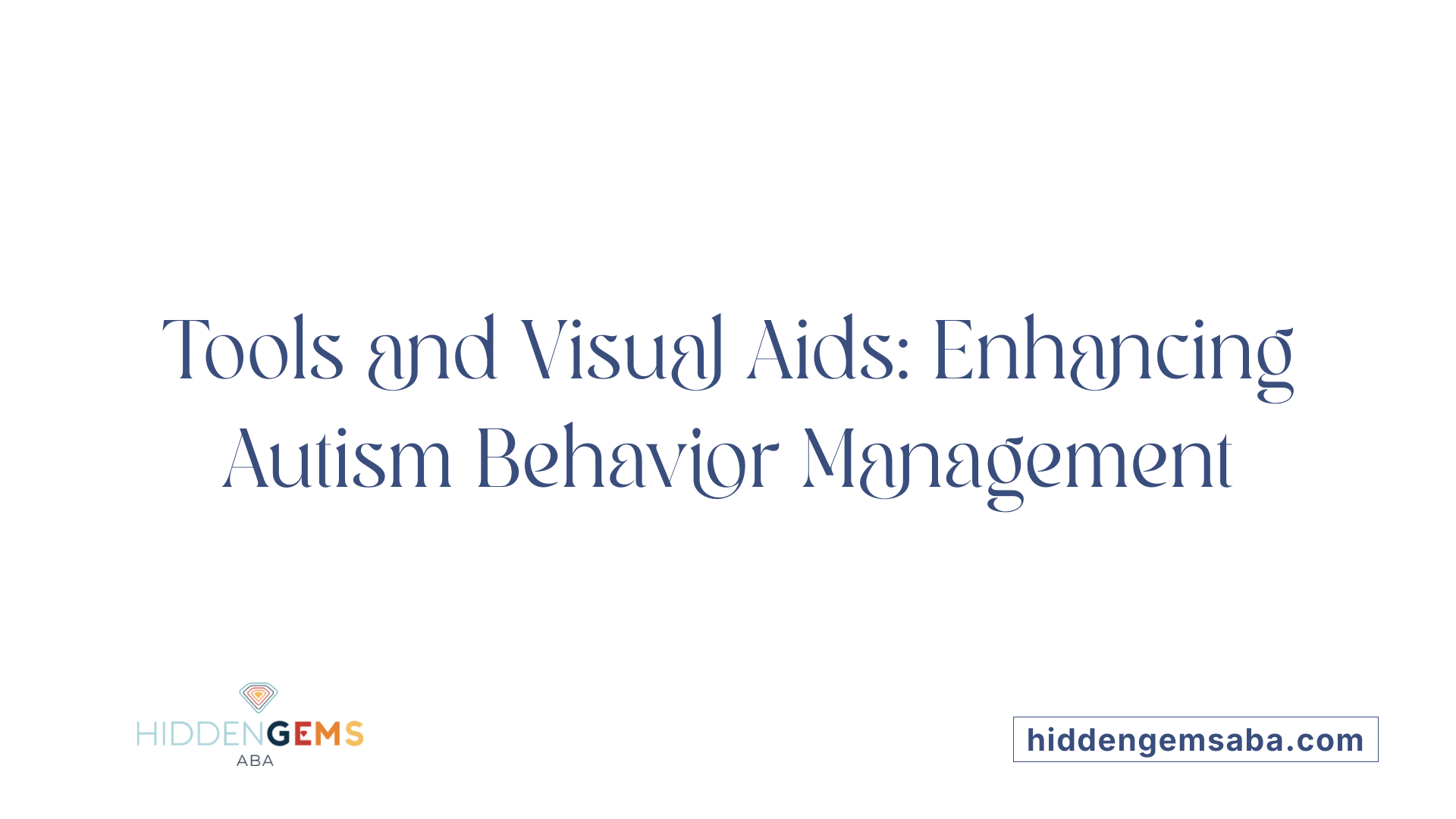
What tools, methods, and support are involved in autism behavior modification?
Behavior modification in autism relies on a variety of tools and strategies designed to promote positive behaviors and reduce challenging ones. One of the most widely recognized approaches is Applied Behavior Analysis (ABA), which employs techniques such as Discrete Trial Training (DTT) and Pivotal Response Training (PRT). These methods use reinforcement, prompts, and structured data collection to encourage desired behaviors.
Visual supports play a crucial role in communication and understanding. Visual timers and countdown charts help children grasp the concept of time and transitions between activities, reducing anxiety and fostering independence. Social stories and visual schedules laid out with pictures or videos clarify daily routines and expectations, making transitions smoother.
Reinforcement tools like token systems and reward charts motivate children to comply with requests and participate in tasks. When children earn tokens or privileges for positive behavior, they learn the connection between actions and consequences.
Environmental modifications also support learning and behavior management. Providing choices within activities gives children a sense of control, while sensory accommodations like noise-canceling headphones or designated calm space can help overstimulated children self-regulate.
Behavior support involves collaboration with professionals such as behavior analysts, speech-language therapists, and occupational therapists. Parent training is often part of the process, empowering families to implement effective strategies at home.
Other technological aids include augmentative and alternative communication (AAC) devices and apps that facilitate language development. Incorporating these tools creates a comprehensive, supportive environment tailored to each child's needs.
Furthermore, crisis management plans and social skills training reinforce behavioral goals and enhance social interactions. This integrated approach—combining tools, methods, and personalized support—aims to foster growth, independence, and social connection in children with autism.
Evidence of Effectiveness and Guidelines
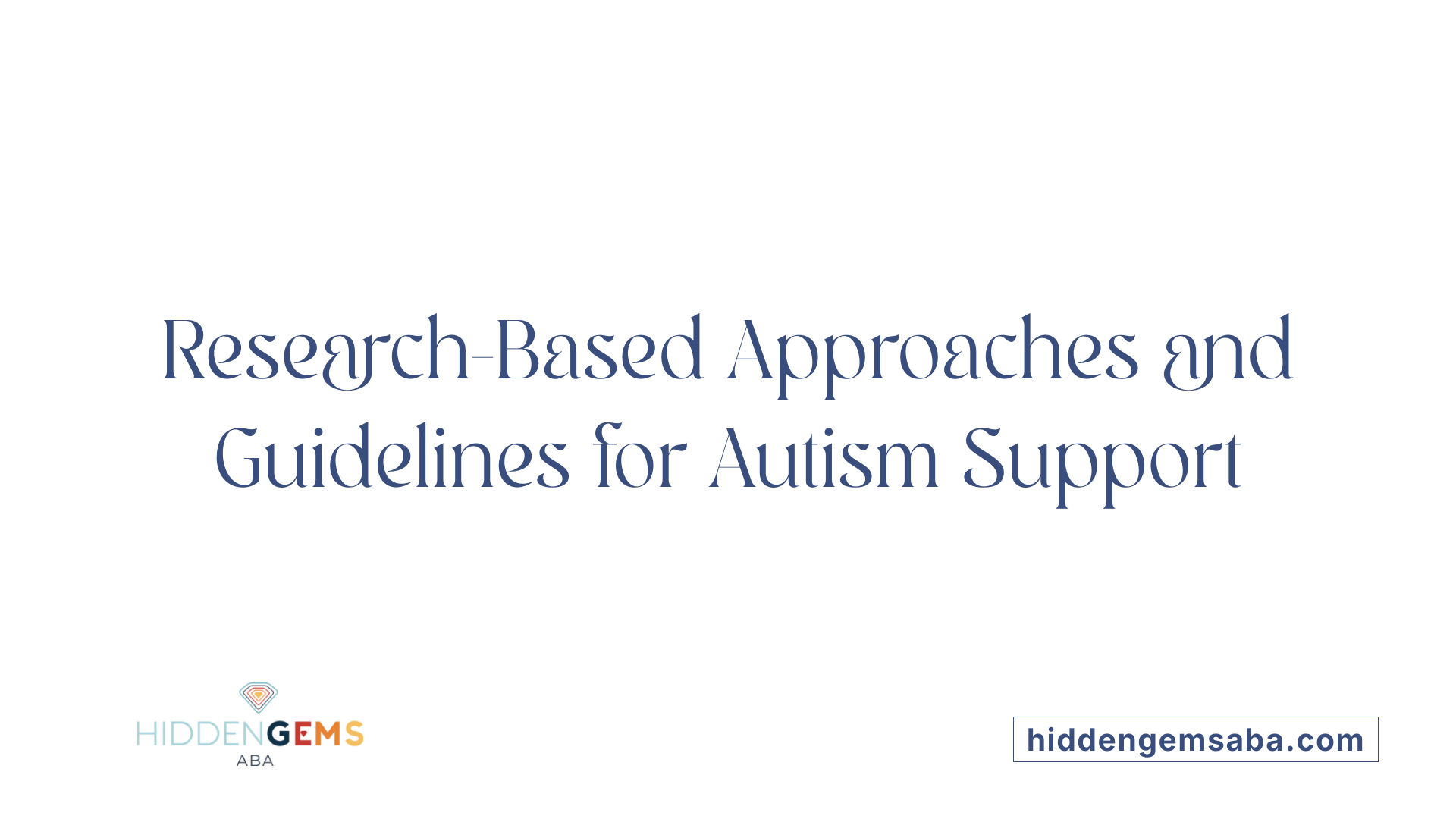 Research strongly supports the use of applied behavior analysis (ABA) as an effective approach for managing behaviors in children with autism. Since its development in the 1960s by Dr. Ole Lovaas, ABA has been studied extensively, with more than 20 scientific studies demonstrating improvements in cognitive functioning, language skills, social interaction, and daily living skills.
Research strongly supports the use of applied behavior analysis (ABA) as an effective approach for managing behaviors in children with autism. Since its development in the 1960s by Dr. Ole Lovaas, ABA has been studied extensively, with more than 20 scientific studies demonstrating improvements in cognitive functioning, language skills, social interaction, and daily living skills.
One of the most well-known early intervention methods, Early Intensive Behavioral Intervention (EIBI), involves highly structured and individualized programs typically starting before age 3. Studies have shown that children receiving EIBI often experience significant gains in IQ, language development, and adaptive behaviors that last at least a year after treatment ends.
Naturalistic approaches like Pivotal Response Treatment (PRT) and the Early Start Denver Model (ESDM) combine behavioral techniques with developmental strategies to improve social and communication skills within natural settings. These methods are especially effective when caregivers and professionals work together to create consistent routines and use positive reinforcement.
Professional guidelines emphasize early, tailored intervention delivered by qualified specialists such as board-certified behavior analysts (BCBAs). Programs should include clear goals, routine assessments, and adjustments based on the child's progress.
Overall, behavioral management grounded in ABA principles—using positive reinforcement, environmental modifications, and structured routines—is considered the gold standard for supporting children with autism. It reduces challenging behaviors, promotes skill development, and offers long-term benefits that improve quality of life.
| Intervention Type | Main Focus | Key Techniques | Evidence & Effectiveness |
|---|---|---|---|
| EIBI | Behavior, Cognitive skills | Intensive, individualized, early start | Significant gains in IQ, language, adaptive skills |
| PRT | Motivation, social skills | Play-based, natural environment | Improvements in social responsiveness and communication |
| DTT | Skill acquisition | Step-by-step teaching, positive feedback | Proven to increase language and cognitive skills |
| ESDM | Social and developmental skills | Naturalistic teaching, parent involvement | Enhances social, cognitive, language abilities |
| ABA Overall | Reduce behaviors, teach skills | Reinforcement, routines, functional analysis | Widely supported by research and practice |
Guidelines for implementation stress the importance of early diagnosis, individualized plans, ongoing progress monitoring, and professional oversight to ensure the highest quality of intervention.
Holistic and Developmental Approaches
What approaches support social and communication skills?
Developmentally based strategies play a vital role in enhancing social and communication abilities in children with autism. Programs like TEACCH (Treatment and Education of Autistic and related Communication Handicapped Children) use visual supports, structured teaching, and individualized plans to foster understanding and engagement.
Social stories are another effective tool; these are short, personalized scripts that help children understand social norms, routines, and expectations, making social interactions less confusing and more predictable.
Naturalistic interventions such as JASPER (Joint Attention, Symbolic Play, Engagement, and Regulation) and PECS (Picture Exchange Communication System) focus on teaching communication and social skills in real-life, engaging contexts. JASPER emphasizes developing joint attention and play skills through natural interactions, while PECS encourages children to communicate by exchanging pictures for desired items or activities.
By integrating visual supports, modeling, and functional communication training, these methods aim to expand language, promote social responsiveness, and improve the child's ability to interact meaningfully with others. Tailoring these strategies to individual needs helps create a supportive environment that encourages developmental progress and long-term social competence.
Supporting Well-being and Emotional Regulation
How can behavioral strategies support emotional regulation in autism?
Behavioral strategies play a crucial role in helping children with autism manage their emotions effectively. One foundational approach involves establishing predictable and calming routines, such as consistent sleep schedules and bedtime rituals. These routines help reduce anxiety and promote restful sleep, which is vital for emotional stability.
Incorporating calming techniques, like sensory calming tools (noise-canceling headphones, weighted blankets, or calming lights), can help children self-regulate during moments of overstimulation or stress. Visual schedules and social stories also serve as effective tools to teach children about recognizing and understanding their feelings, enabling them to respond more calmly to everyday situations.
Teaching skills like requesting breaks or engaging in calming activities, such as deep breathing or gentle movement, provides children with practical ways to soothe themselves when upset. It is also important to help children recognize emotional cues through visual or verbal prompts, fostering emotional awareness.
Cognitive Behavioral Therapy (CBT), adapted for children, adolescents, and adults with autism, supports emotional health by addressing issues like anxiety, depression, and anger. CBT helps children understand how thoughts influence feelings and behaviors, empowering them to develop coping strategies.
Collaboration with therapists, along with the use of sensory supports and relaxation techniques, creates a nurturing environment where children learn to regulate their emotions more independently. Overall, these strategies aim to decrease reactivity and promote resilience, allowing children to better navigate daily stresses and social interactions.
Implementing Autism Behavior Modification in Daily Life
How do guidelines support the use of behavior modification in everyday settings?
Guidelines for incorporating behavior modification at home, school, or community settings focus on consistency, individualization, and collaboration. Establishing predictable routines and visual supports, like schedules and timers, helps children understand expectations and transitions, fostering self-control and social development.
Creating a structured environment reduces confusion and promotes positive behaviors. Using visual timers and countdown charts can help children grasp the concept of time passing and prepare for upcoming activities.
Engaging caregivers, teachers, and specialists in training about reinforcement, environmental adjustments, and communication techniques ensures a unified approach. This teamwork enhances generalization of skills, meaning children can apply what they learn across various settings.
Monitoring progress through data collection and regular assessments enables caregivers to tweak strategies and maintain effectiveness. For example, if a child demonstrates difficulty transitioning, adjustments like offering choices or using visual cues can facilitate smoother changes.
The goal is to promote consistent, positive experiences that build confidence and independence while reducing problematic behaviors. Effectively applying these guidelines supports children in making meaningful behavioral and developmental improvements over time.
What are the roles of parents and professionals in behavior management?
Parents are vital in implementing behavioral strategies consistently across all settings. They can reinforce learned skills at home, provide daily routines, and collaborate with professionals to tailor interventions to their child's needs.
Professionals such as behavior analysts, teachers, and therapists develop individualized plans based on early assessments and ongoing data. They train parents and educators on reinforcement techniques, environmental modifications, and communication strategies.
Together, this team ensures that interventions are cohesive, culturally appropriate, and adaptable to changing needs, fostering a supportive environment for growth.
How can progress be monitored and strategies adjusted?
Regular data collection—tracking behaviors, triggers, and responses—helps evaluate the success of interventions. Professionals often use tools like ABC charts (Antecedent, Behavior, Consequence) to identify patterns and adjust plans.
Adjustments may include increasing reinforcement, modifying routines, or introducing new communication aids. Continuous monitoring allows for timely responses to challenges, ensuring that strategies remain effective.
Both caregivers and professionals should conduct periodic reviews of goals and progress, maintaining flexibility to evolve strategies as children develop new skills or encounter new challenges.
This dynamic process of assessment and adjustment promotes sustained behavioral improvements, helping children navigate social settings successfully without overwhelming them.
A Path Forward in Autism Support
Behavior modification strategies, especially those rooted in the science of ABA, provide a reliable framework for enhancing the lives of children with autism. By integrating visual supports, structured routines, positive reinforcement, and individualized supports, caregivers and professionals can foster meaningful progress. Continued research, professional guidance, and a respectful understanding of neurodiversity principles ensure that these interventions promote not only skill acquisition but also dignity and well-being, paving the way for a more inclusive and supportive society.
References
- 15 Behavior Strategies for Children on the Autism Spectrum - ibcces
- Behavioral Management Therapy for Autism | NICHD
- Behavioral Interventions for Autism Spectrum Disorder
- Helpful strategies to promote positive behavior | Autism Speaks
- 8 Effective Behavior Management Strategies for Children with Autism
- Applied Behavior Analysis (ABA) | Autism Speaks
- Types of Autism Behavior Interventions
- Behavioral Interventions for Autism Spectrum Disorder






